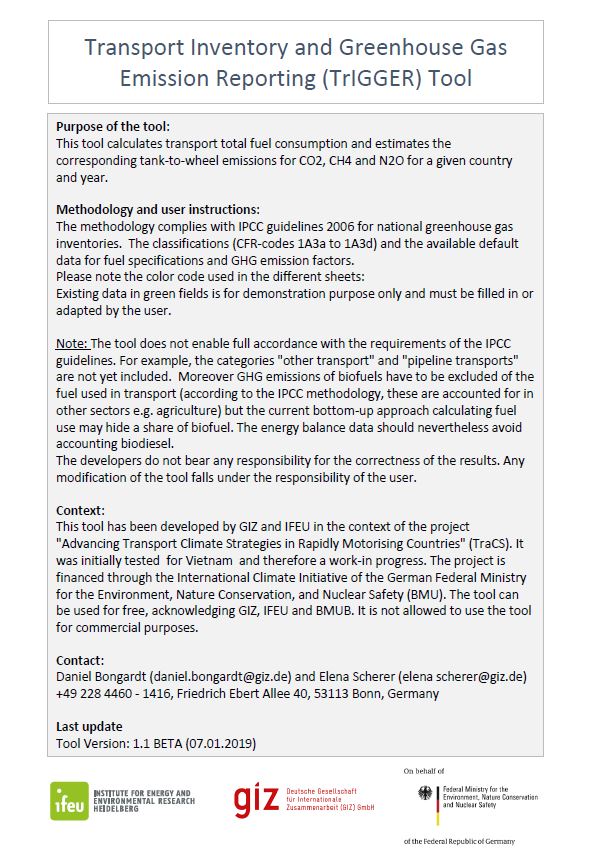The Transport Inventory and Greenhouse Gas Emissions Reporting (TrIGGER) tool is a simple bottom-up spreadsheet model to calculate national transport greenhouse gas (GHG) inventories. It is an open tool that can be easily adapted to any country‘s needs. The international TrIGGER version as well as a user manual can be found here. TrIGGER was developed by the Institute for Energy and Environmental Research (ifeu).
This TrIGGER version was adapted to Kenya and includes country specific data. It illustrates the model’s applicability in supporting countries with their first attempts at creating a bottom-up emissions inventory. The data in the model does not comply with the official national GHG inventory data as it applies a bottom-up methodology in the road sub-sector. Since an update in 2021 following a data collection exercise it also contains bottom-up information on waterborne transport. Data availability in the sector is, however, still limited and results for the sector should be treated with caution.
The model provides a validation of results based on a comparison of national energy balance data versus sub-sectoral outputs. In the case of Kenya, results indicate a mismatch between the bottom-up and top-down data (based on the national energy balance data), particularly for diesel. Reasons for this may be uncertainties in the sectoral allocation of fuel sales data, because, for example, petroleum products are purchased at road-side petrol stations for non-transport use; uncertainty in fleet composition and mileage data estimates which may be underestimated; transit traffic in the freight sector that fuels in Kenya but is not accounted for in the national vehicle fleet; and possible underestimation of emission factors for motorcycles due to high load factors in Kenya.
Despite these limitations, the bottom-up exercise gives a good indication of how emissions are split up between the different transport sub-sectors, particularly for road transport which is the largest emitter in Kenya. This information allows for evidence-based development of climate change mitigation actions in the sector.
The tool version 1.1 BETA (07.01.2019) was used and contains data from Kenya from 2015 and 2019. The data from 2019 pertains to the Kenyan maritime and shipping sector and was collected in the first half of 2021. It was used as basis for an update of the maritime and shipping sections of the tool.
Topics:
Language: English
Authors (alphabetical order):
